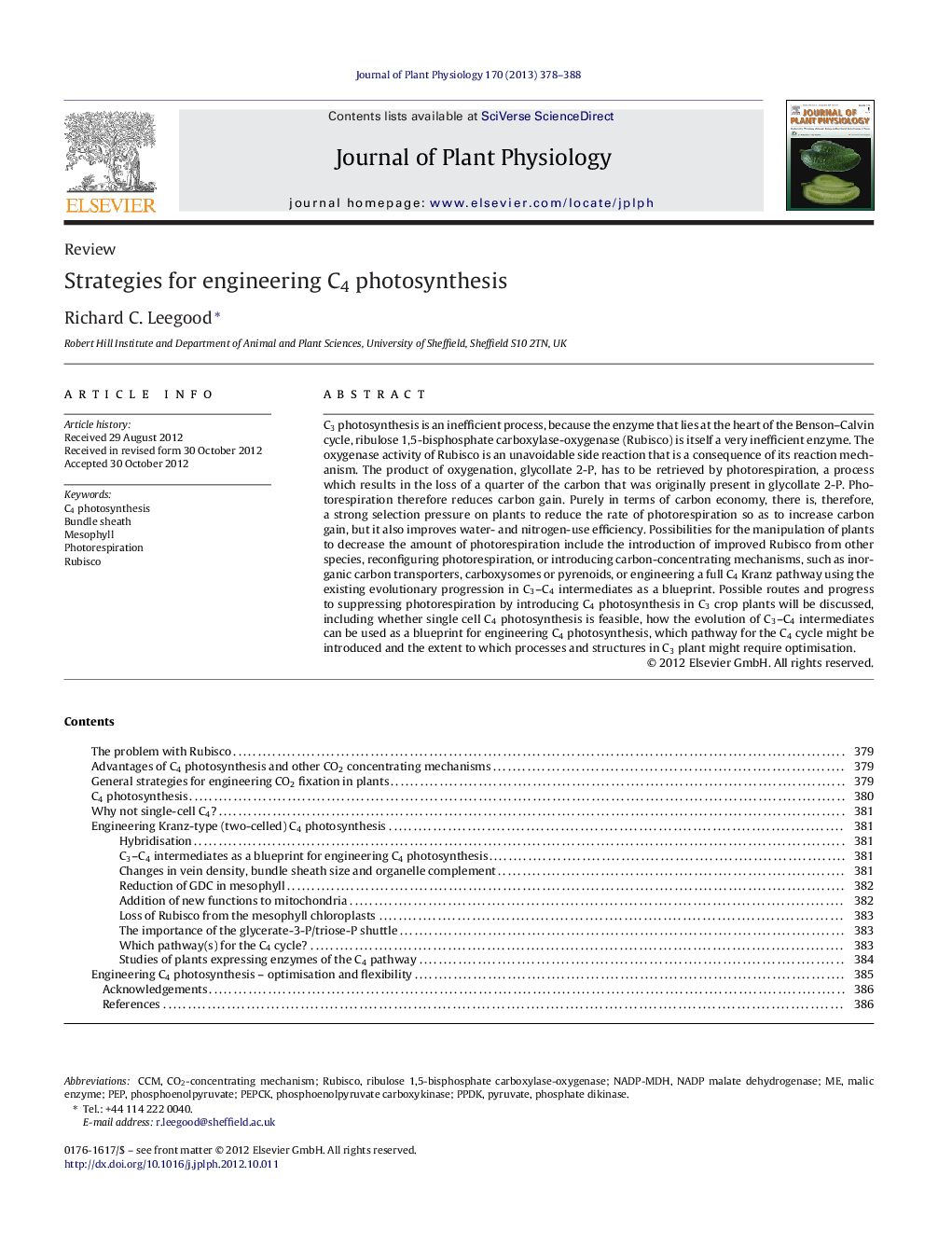| Article ID | Journal | Published Year | Pages | File Type |
|---|---|---|---|---|
| 2056120 | Journal of Plant Physiology | 2013 | 11 Pages |
C3 photosynthesis is an inefficient process, because the enzyme that lies at the heart of the Benson–Calvin cycle, ribulose 1,5-bisphosphate carboxylase-oxygenase (Rubisco) is itself a very inefficient enzyme. The oxygenase activity of Rubisco is an unavoidable side reaction that is a consequence of its reaction mechanism. The product of oxygenation, glycollate 2-P, has to be retrieved by photorespiration, a process which results in the loss of a quarter of the carbon that was originally present in glycollate 2-P. Photorespiration therefore reduces carbon gain. Purely in terms of carbon economy, there is, therefore, a strong selection pressure on plants to reduce the rate of photorespiration so as to increase carbon gain, but it also improves water- and nitrogen-use efficiency. Possibilities for the manipulation of plants to decrease the amount of photorespiration include the introduction of improved Rubisco from other species, reconfiguring photorespiration, or introducing carbon-concentrating mechanisms, such as inorganic carbon transporters, carboxysomes or pyrenoids, or engineering a full C4 Kranz pathway using the existing evolutionary progression in C3–C4 intermediates as a blueprint. Possible routes and progress to suppressing photorespiration by introducing C4 photosynthesis in C3 crop plants will be discussed, including whether single cell C4 photosynthesis is feasible, how the evolution of C3–C4 intermediates can be used as a blueprint for engineering C4 photosynthesis, which pathway for the C4 cycle might be introduced and the extent to which processes and structures in C3 plant might require optimisation.
